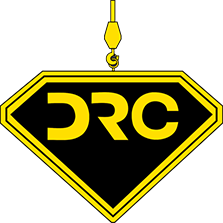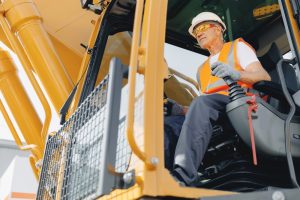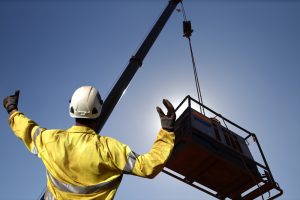Cranes have been crucial to the construction industry for centuries, greatly aiding its advancement. However, they can pose hazards, such as two-blocking. Let’s explore this potential risk and discuss practical prevention tips.
What is Two-Blocking?
Two-blocking occurs when the load block or overhaul ball on a crane makes contact with the boom nose, auxiliary nose, or boom extension nose. This collision is dangerous because it can cause the wire rope to break, leading the load to fall. Such incidents can damage equipment and pose serious risks to operators and nearby workers, potentially resulting in fatal accidents.
Fortunately, most modern cranes have anti-two-blocking warning systems that alert operators before contact occurs. However, many older cranes lack this technology.
When Does Two-Blocking Occur?
Understanding when two-blocking is likely helps operators reduce risks. Here are some factors that increase the chances of two-blocking:
- The load block or overhaul ball is hoisted too high.
- The boom is extended without being hoisted down first.
- The crane’s anti-two-blocking system malfunctions or is not working.
- The operator lacks the necessary training to safely operate the crane.
How to Prevent Two-Blocking
Want to prevent two-blocking incidents? Follow these top prevention tips:
1. Maintain the Crane
Conduct routine maintenance checks and inspect the crane thoroughly before each use.
2. Install an Anti-Two-Blocking System
Test the system before each use to ensure it functions properly. Set it to the correct mode, and inspect for any damage or defects before proceeding with a load.
3. Follow Safety Protocols
Implement safe load and lift procedures, including removing obstacles and operating the crane steadily.
4. Monitor Load Block and Overhaul Ball
Always know their positions and ensure they have adequate clearance from the boom nose, auxiliary nose, or boom extension nose.
What Is an Anti-Two-Blocking System?
Modern cranes come with anti-two-blocking systems to prevent incidents and protect workers. These systems have switches mounted at the boom ends, with a weight attached to a chain or cable that rotates around a wire rope.
How It Works
When the load block or overhaul ball lifts the weight, switches activate the alarm system. This triggers a buzzer and warning light to alert the operator of an impending two-blocking event. The hoist-up and boom-down functions are disabled to prevent it.
While anti-two-blocking systems are crucial, they must be supported by proper crane training, hands-on experience, and safety procedures.
Why They’re Needed
Anti-two-blocking systems are essential for several reasons. They are needed to protect operators and workers, increase productivity, and keep materials safe. Additionally, these systems are required by OSHA safety standards.
Protect Operators and Workers
Anti-two-blocking systems are most important for protecting operators and workers. It enhances safety through operations and therefore provides a greater sense of security for those working on the site.
Boost Productivity and Efficiency
Anti-two-blocking systems help to improve job site performance. Because it keeps workers safe, it allows for them to focus on their job without worry. In turn, this increases productivity and efficiency across a work site.
Ensure Safe Operations
An anti-two-blocking system not only keeps workers safe, but it also guarantees secure load and lifting during a project. When moving expensive equipment and materials, this system is not only necessary but also needed.
Anti-Two-Blocking Warning Systems
There are two different anti-two-blocking (ATB) systems available today. Both help prevent equipment damage and protect workers from crane-related injuries.
Wireless ATB Systems
Ideal for telescopic or lattice boom cranes without lifting personnel, wireless ATB systems are easy to install and feature audio and visual alarms to alert operators when the crane’s hook reaches its maximum height.
Hardwired ATB Systems
Designed for fixed boom cranes and lifts requiring personnel, hardwired ATB systems include a cable. They activate audio and visual alarms when the hook reaches maximum height, helping operators prevent collisions with other components.
Why Crane Safety Is Crucial in Operator Training
Cranes are powerful tools that enable construction crews to perform otherwise impossible tasks. However, improper use can pose significant risks to operators and nearby workers.
Following safety protocols and having a plan for potential issues helps:
- Prevent overloading
- Stop debris from falling
- Eliminate electrical hazards
- Protect workers and bystanders
- Enhance efficiency
- Minimize delays
- Reduce risk and liability
Learn More About Cranes and Two Blocking: Get Certified Today!
If you are passionate about cranes, construction, and high-stakes safety, consider getting crane operator certified! Our training school in Baytown, Texas, offers training programs to prepare you for the job. Our accelerated courses combine classroom instruction with hands-on experience to teach safe and effective crane operations.
Don’t wait to pursue your future. Begin the enrollment process today and see how DRC can help you achieve your goals in as little as three weeks!





